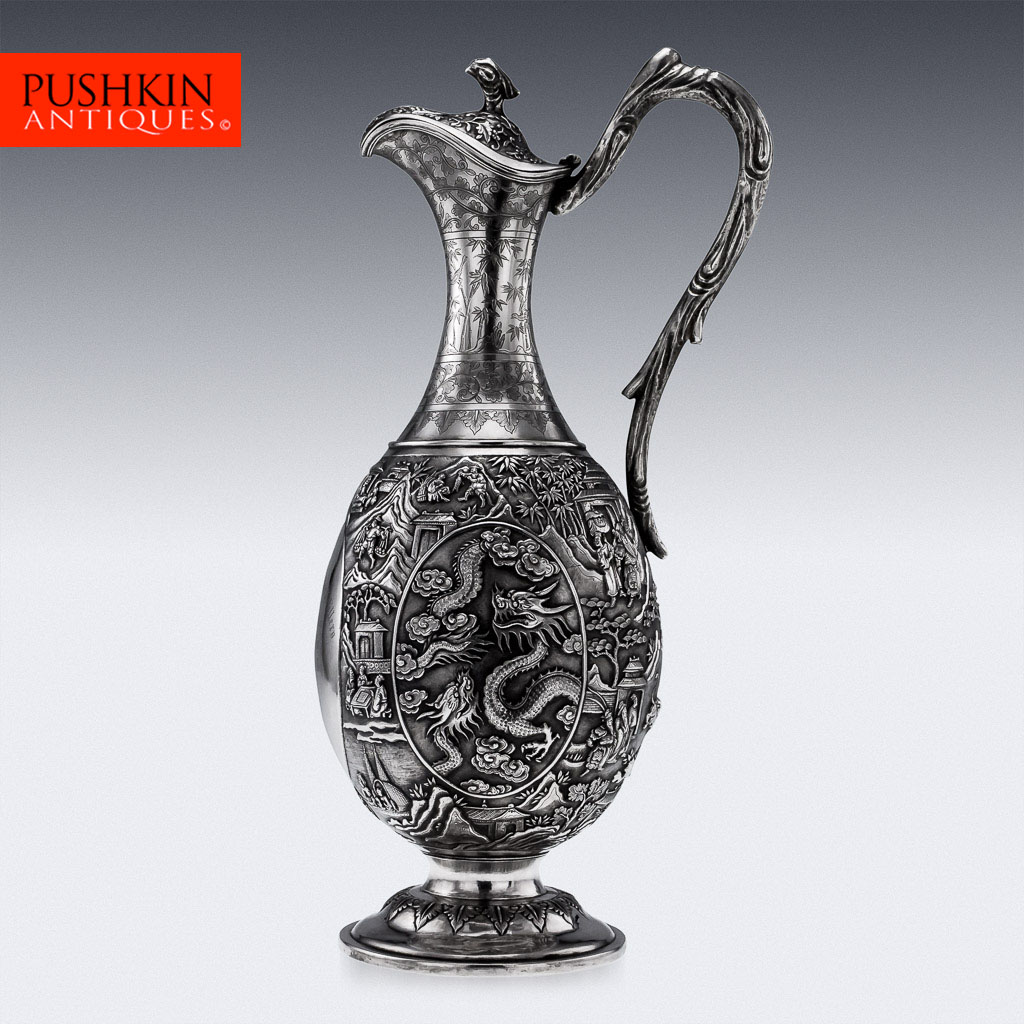Introduction to Chinese Export Silver
"Chinese Export Silver" refers to the silver made in China, mostly from late 18th Century to mid 20th Century for the Western clientele.
When in late 18th Century the commercial exchanges between East and West started to flourish, the demand for fine Chinese products increased significantly.
Merchants and Western tourists visiting China soon realised that they could commission silver items in China for a cheaper price than in their own home countries. In fact, the earliest pieces are often made in Neo-classical or Georgian style, almost indistinguishable from those made in Europe if not for a surprisingly heavy weight. Especially in this first period the silver workshops remained anonymous and the Chinese silversmiths often used to mark silver with pseudo English marks, to imitate the English hallmark system.
From the second half of 19th Century, with the growth of the market and the subsequent interest of the Western clientele toward the Chinese art, Chinese silversmiths started to introduce traditional Chinese decorative motifs, such as dragons, bamboo leaves, plum flowers and Chinese landscapes. The result is a fascinating blend between East and West: traditional European objects and tablewares such as tea and coffee sets, bowls, vases and flatware were decorated with distinctively Asian designs and symbolic forms. Due to the growing popularity of their craftsmanship, Chinese silversmiths began to use their own marks and brands such as Wang Hing, Da Xing, Tuck Chang or Luen Wo became proper statements.
Not only wealthy American and European families started to collect Chinese Export Silver: among the earliest and most avid collectors it is worth to mention Catherine the Great of Russia and Queen Charlotte, wife of King George III of England.
The success of Chinese Export silver became a long-lasting one, interrupted just with outbreak of the First World War and the subsequent influence of Japan over China.
Chinese Export silver has been rediscovered by scholars and collectors in the 1970s thanks to the research of H. A. Crosby Forbes, John Devereux Kernan, Ruth S. Wilkins (‘Chinese Export Silver 1785 to 1885’, Milton, Museum of the American China Trade, 1975) and more recently Adrien von Ferscht ("Chinese Export Silver 1785-1940: The Definitive Collectors' Guide")
Nowadays its market is growing fast and steadily attracting buyers from both the East and the West.





